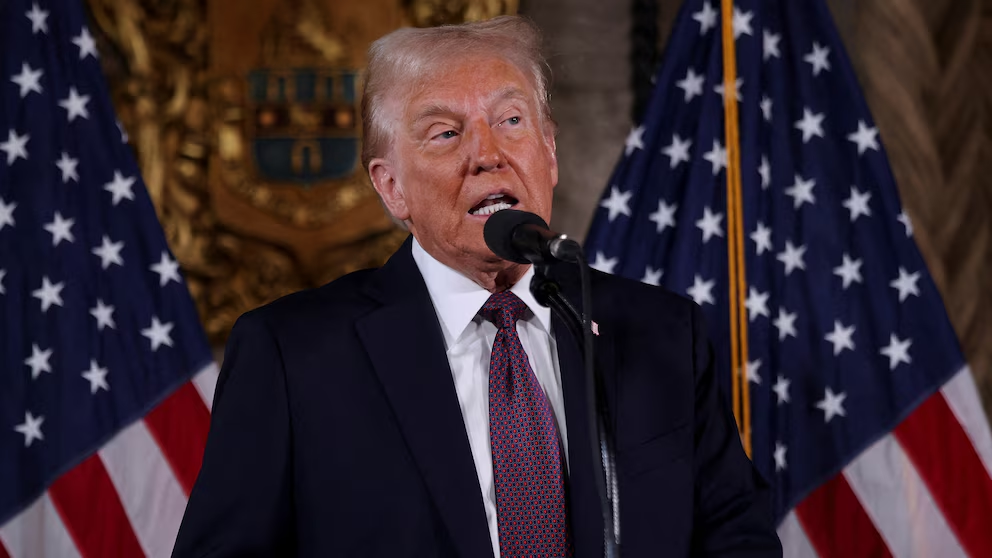Can Donald Trump Truly Seize Control of the Panama Canal and Rename the Gulf of Mexico?

Department of Research, Studies and International News 22-01-2025
As Donald Trump took the oath of office for his second term as President of the United States, his inaugural address reignited attention with some audacious proclamations. Among his remarks were bold aspirations: acquiring the Panama Canal and renaming the Gulf of Mexico. While his rhetoric stirred conversation, the feasibility of such actions invites scrutiny.
Trump’s speech on Monday exuded ambition, referencing “Manifest Destiny,” a 19th-century ideology that promoted the territorial expansion of the United States. While outlining goals for space exploration, he declared an intent to rename the Gulf of Mexico as the “Gulf of America.” His statement elicited reactions from the audience, including laughter from political rival Hillary Clinton.
In a nostalgic nod to former presidents, Trump praised William McKinley, known for annexing territories like Hawaii, and Theodore Roosevelt, who oversaw the construction of the Panama Canal. Trump described the canal as a “foolish gift” handed over to Panama, asserting that the U.S. had been wronged by its transfer. He further alleged that China’s operations near the canal undermined American interests, vowing to reclaim it.
Panama’s Response and Historical Context
Panama’s President, Jose Raul Mulino, swiftly dismissed Trump’s claims, emphasizing Panama’s sovereignty over the canal. In a formal statement, he asserted, “Every square meter of the Panama Canal and its surrounding area belongs to Panama and will remain so.”
Ownership of the canal transitioned to Panama on December 31, 1999, under the Torrijos-Carter Treaty of 1977, which outlined the handover process. While the treaty permits the U.S. to ensure the canal’s neutrality, it does not grant provisions for reclaiming ownership.
Despite Trump’s allegations of unfair fees and mismanagement, Mulino reiterated that tariffs are established based on international agreements. Furthermore, he refuted Trump’s suggestion that China controls the canal, clarifying that Chinese involvement is limited to the operation of two ports at the canal’s entrances, managed by a Hong Kong-based corporation since 1997.
Could the U.S. Reclaim the Panama Canal?
Legal experts and international analysts have expressed skepticism about Trump’s ability to regain control of the canal. Bruce Fein, an American lawyer specializing in international law, stated, “Unconditional sovereignty was transferred to Panama with no provision for reversion to the United States.” Fein added that any attempt to take the canal by force would violate international law, including the UN Charter.
The canal remains vital to global trade, accounting for 2.5% of worldwide maritime commerce and 40% of U.S. container traffic. However, it has faced challenges, including reduced traffic due to drought conditions in Central America, highlighting the complexity of managing this crucial waterway.
Renaming the Gulf of Mexico: A Symbolic Gesture with Limited Reach
Trump’s proposal to rename the Gulf of Mexico as the “Gulf of America” is technically possible, at least within the United States. The U.S. Board on Geographic Names, which operates under the Department of the Interior, could authorize such a change for domestic use. However, international acceptance is another matter entirely.
Global maritime nomenclature is overseen by organizations like the International Hydrographic Bureau (IHB), which standardizes names to avoid disputes. While the U.S. could adopt the new name internally, other nations bordering the Gulf—including Mexico and Cuba—are unlikely to recognize it.
Historical parallels, such as the unresolved debates over the Sea of Japan versus the East Sea or the Persian Gulf versus the Arabian Gulf, illustrate how geopolitical tensions can prolong naming conflicts.
Trump’s inaugural address also revisited the human cost of constructing the Panama Canal. He claimed that 38,000 lives were lost during its construction, primarily due to diseases like malaria and yellow fever. While the figure is disputed, historians agree that thousands perished, including workers from Jamaica, Central America, and Barbados.
The French initially attempted to build the canal in the 1880s but abandoned the project after losing an estimated 25,000 workers to disease and financial ruin. The U.S. resumed construction in 1904, completing the canal a decade later, with approximately 6,000 additional fatalities recorded.
Trump’s bold proclamations reflect his penchant for controversial proposals, yet the practicality of such ambitions is doubtful. Whether attempting to acquire the Panama Canal or rename a major body of water, these ideas are fraught with legal, political, and diplomatic obstacles.
For now, both the canal and the Gulf of Mexico are likely to remain under their current jurisdictions and names, serving as enduring symbols of sovereignty and international cooperation.





